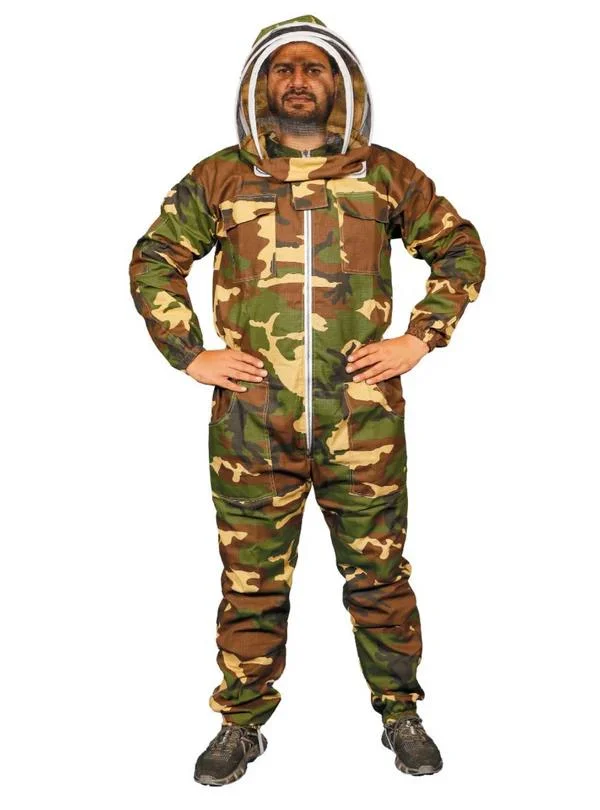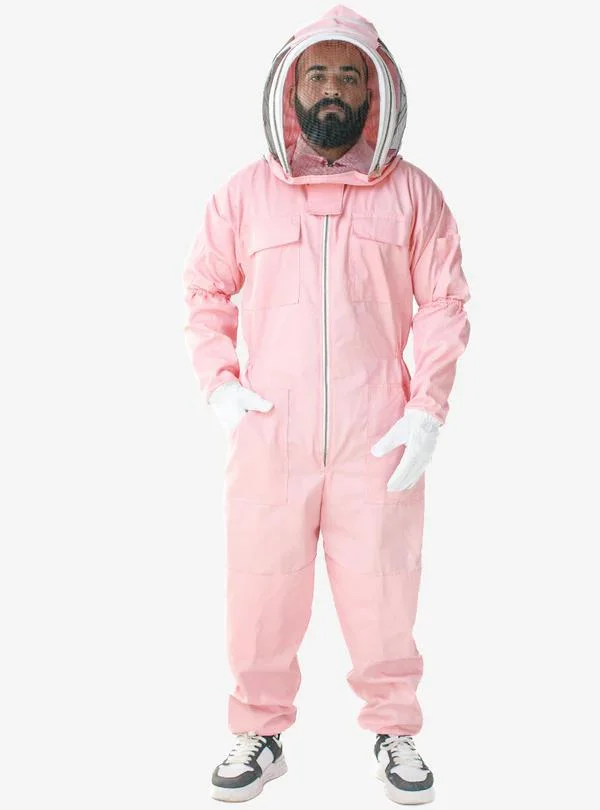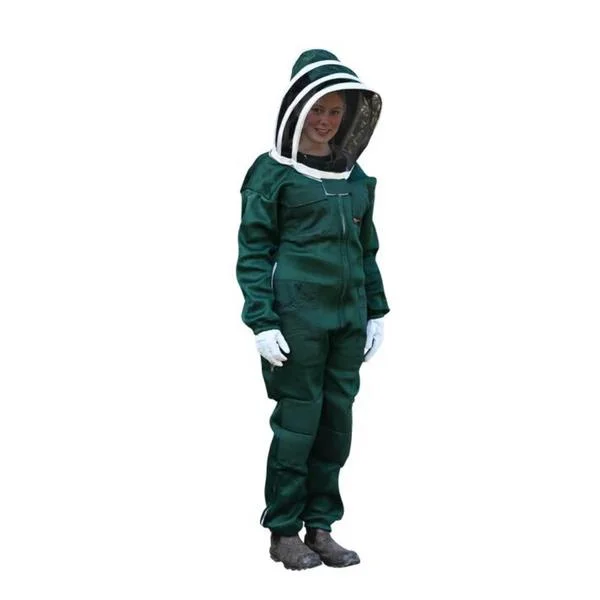Beekeeping is an art as old as time, requiring not only knowledge and patience but also a significant level of bravery. At the heart of a beekeeper’s gear is the beekeeping suit, a crucial piece of equipment that makes the difference between a pleasant day with the bees and a potentially painful one. This detailed exploration delves into what makes a professional beekeeping suit invaluable, the choices available, and how these suits have evolved to meet the modern beekeeper’s needs.
Why a Beekeeping Suit Is Essential
Imagine plunging into a bee hive unprotected—it’s a recipe for trouble. The professional beekeeping suit is akin to a knight’s armor in the world of apiculture, providing necessary protection against the stings of defensive bees. Designed to cover every possible entry point from head to toe, these suits are the beekeeper’s first line of defense, enabling safe and effective hive management.
Choosing the Right Material: More Than Just Fabric
The material of a beekeeping suit is a pivotal factor in both protection and comfort. Here’s a closer look at the materials typically used:
- Cotton: Thick and durable, cotton suits are a traditional choice. They offer excellent protection due to their dense weave, making it hard for bee stingers to penetrate. However, cotton can be quite heavy and may become uncomfortable in warmer temperatures.
- Polyester: Lighter than cotton, polyester provides good protection and is easier to move in. It’s often treated to be water-resistant, which is an advantage in damp conditions. The downside is that it can trap heat, which might become uncomfortable during long hours under the sun.
- Ventilated Fabrics: These are the pinnacle of beekeeping suit design, featuring layers of mesh that allow for superb airflow, reducing overheating. These ventilated bee suits are ideal for hot climates, ensuring that the beekeeper remains cool and comfortable without compromising on safety.
Detailed Design Features of a Professional Suit
Professional beekeeping suits are meticulously designed to cater to the needs of beekeepers:
- Full Coverage: The best suits offer head-to-toe coverage, including gloves, boots, and a fully enclosing hood and veil. Elastic bands at the wrists and ankles ensure that bees cannot sneak inside.
- Veil Varieties: The veil is critical for visibility and protection. Designs vary from shrouded hoods that offer ample breathing space to fencing-style veils that provide excellent visibility and keep the mesh away from the face, reducing the chances of a sting.
- Utility Features: High-quality suits include multiple pockets for tools, reinforced knees for durability when kneeling, and robust zippers that make the suit easy to put on and take off. These practical features can significantly enhance the beekeeping experience.

Comfort Versus Protection: Finding the Balance
The ideal beekeeping suit balances comfort with maximum protection. It should fit well—neither too tight to restrict movement nor too loose to allow bees inside. A well-fitting suit allows for free movement and reduces fatigue, making beekeeping a more enjoyable activity.
The Evolution of Beekeeping Suits
Beekeeping attire has evolved from simple netted hats and thick clothing to sophisticated suits equipped with the latest textile technology. Modern suits might incorporate UV-resistant materials to prevent the suit from heating up or use ultra-lightweight yet strong fabrics that improve wearability without sacrificing safety.
Safety Protocols for Using Beekeeping Suits
Even with a high-quality suit, proper usage is key to safety:
- Routine Inspections: Always check the suit for tears, loose threads, or broken zippers. Ensuring the integrity of the suit is essential to remain protected.
- Proper Suiting Up: Ensure that every part of the suit is securely fastened and that gloves and boots leave no gaps for bees to enter.
- Maintenance: Regular cleaning of the suit is necessary to remove pheromones and other attractants that might provoke the bees.
Beyond the Suit: Comprehensive Bee Protection Strategies
While a suit is fundamental, using additional protective strategies can enhance safety. Employing a smoker can help calm bees, reducing their propensity to sting. Understanding bee behavior and gently managing hive inspections also play crucial roles in avoiding stings.
Impact of a High-Quality Beekeeping Suit on Hive Management
A professional beekeeping suit does more than protect; it instills confidence. This confidence translates into calmer, more deliberate hive management, which in turn keeps the bees calm and less likely to sting. The result is a more productive and enjoyable beekeeping experience.
Selecting the Right Beekeeping Suit
When choosing a suit, consider your local climate, the frequency of your beekeeping, and your specific needs in terms of mobility and comfort. Investing in a suit that offers both high protection and comfort can transform your beekeeping experience.

Conclusion
In the intricate world of beekeeping, where every moment with the hive is a delicate dance of precision and care, the choice of gear is paramount. A professional beekeeping suit isn’t merely attire; it’s a shield against the unpredictability of nature, ensuring safety without compromising comfort. By investing in premium beesuits and beekeeping accessories, beekeepers equip themselves with the tools to navigate this ancient craft with confidence and efficiency. So, suit up with the best—because your safety and the well-being of your bees depend on it.
Frequently Asked Questions About Professional Beekeeping Suits
1. Why do I need a professional beekeeping suit?
A professional beekeeping suit is essential for your safety when working with bees. It provides full-body coverage to protect you from bee stings, ensuring a safe and comfortable beekeeping experience.
2. What are professional beekeeping suits made of?
Beekeeping suits are typically made of materials like cotton, polyester, or ventilated fabrics. Cotton suits offer durability and protection, while polyester suits are lighter and water-resistant. Ventilated suits use mesh layers for airflow, ideal for hot climates.
3. How do I choose the right size beekeeping suit?
Choose a suit that fits comfortably without being too loose or too tight. It should allow for freedom of movement while ensuring bees cannot enter through gaps. Refer to size charts provided by manufacturers to select the best fit.









